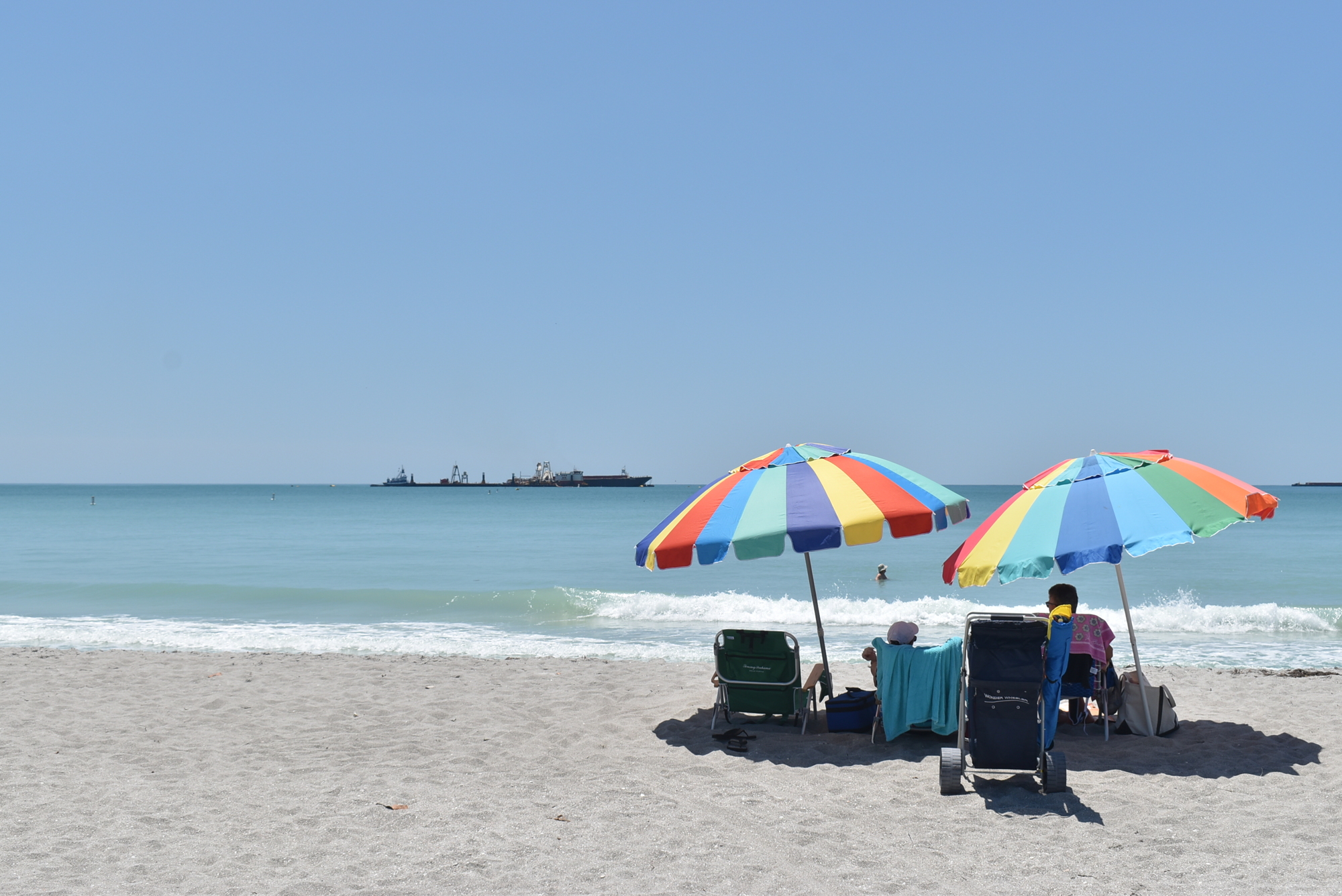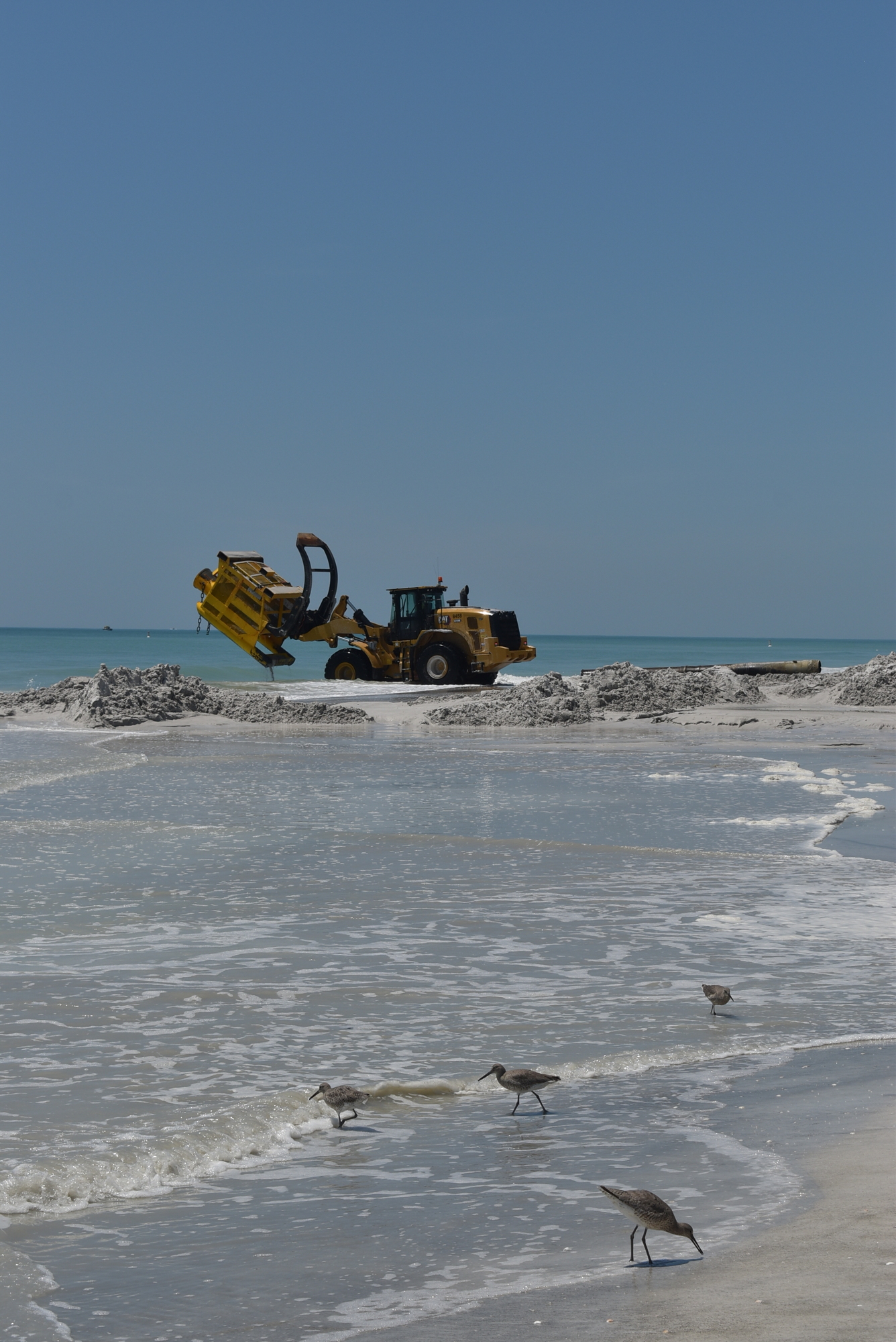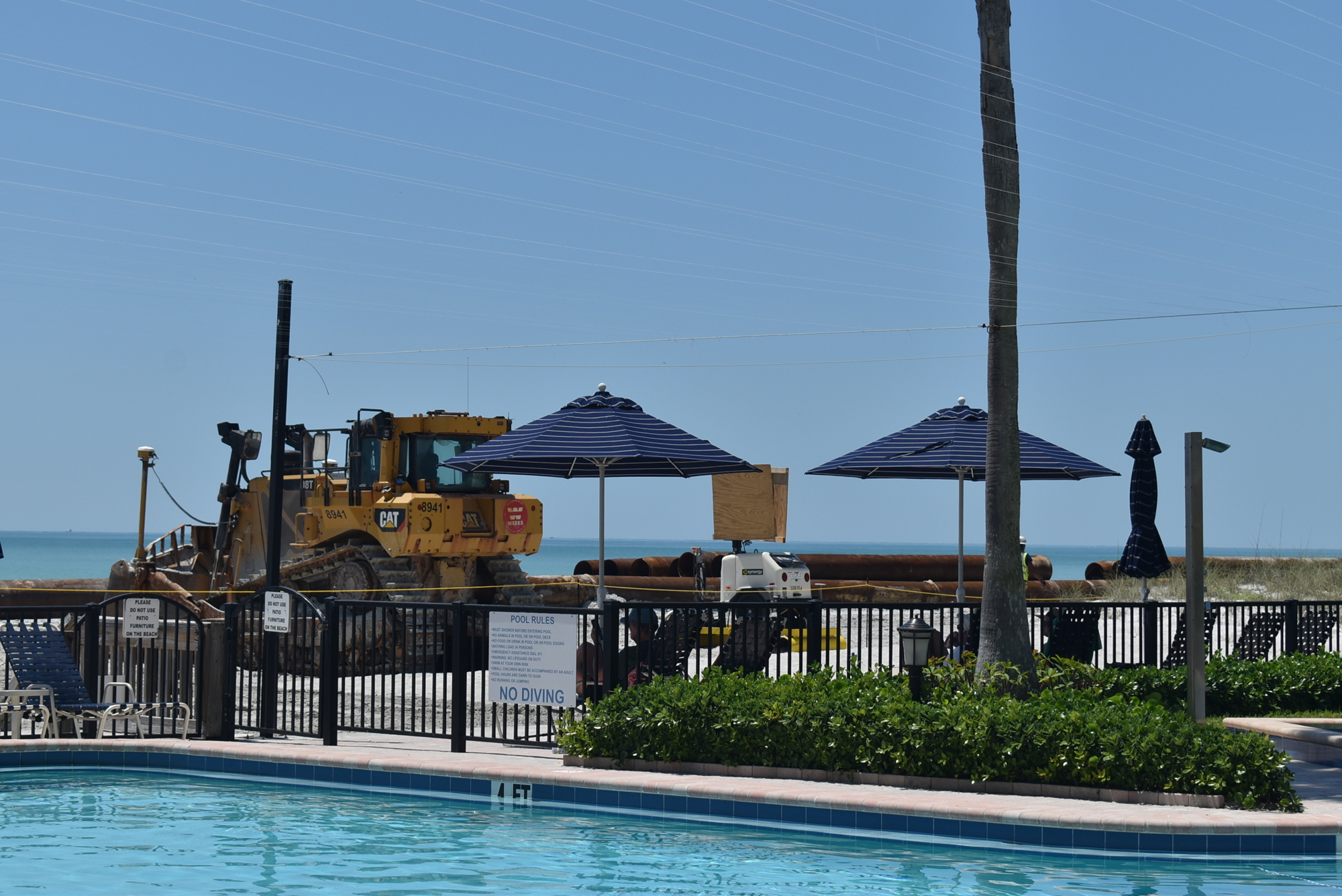- April 1, 2025
-
-
Loading

Loading

Like other beachfront residents, Ellen Leef likes to keep her sliders open at night, the better to hear the waves. But since dredging began this spring, she hears more mechanical noise than natural whooshing.
"(Usually) it’s mostly sailboats, occasional dolphins, sometimes those awful Cigarette boats, but mostly it’s really calm and peaceful except when the water is thrilling because of a storm, so when this thing came it caught my attention,” she said.
The dredging adds a clattering instrument to the natural soundtrack of her neighborhood and though she knows it’s important work, she prefers the sound of the mockingbirds to pipes being transported.
“Things have to happen, I understand that,” Leef said. “Now I keep my sliders closed.”
It's a rare opportunity to watch as the town's comprehensive project to add more than a million cubic yards of sand to the beaches. The town has put 7.7 million cubic yards of sand on its beaches dating back to 1993. Beach project manager Charlie Mopps said the figure will be closer to 9 million after its current projects are finished. For perspective, a dump truck can carry 10-14 cubic yards.

Francine Achbar, who also lives on the Gulf, has been getting her binoculars out to see what’s going on. It’s slightly annoying, but also fascinating.
“It’s like Bill Nye would do,” Achbar said. “‘What does it mean to dredge a channel and how would it work?’ I have a childlike curiosity and I bet a lot of other people have questions.”
Like Francine said, people do have a lot of questions. Here's what we've learned and can pass along:
Where does the sand come from?
The town is using a combination of sand sources from Longboat Pass, New Pass and Passage Key, a spot west of Anna Maria. Typically, the sand is being dredged from about 14-15 feet underwater.

How does it work?
In the case of the sand dredged from a recent project in New Pass, sand can be dredged directly from underwater and pumped to the beach through a 16-inch flexible pipeline.
In other applications, a dredge can pump into a barge called a spider barge, which diverts sand to a scour barge. “The scour barges… there [are] like big hollow hulls of ships that get filled with sand, and there’s a baffling system on the inside of them, so they’re pretty technological. And then they get towed by tugs.”
From there, the sand is deposited on the beach and moved around by a series of earthmovers.
Why isn’t the town filling in front of my house?
Mopps said the town uses a design template for a 120-foot wide beach from the baseline to determine which areas need to be filled.
“A lot of the areas within the Key, the beaches are not erosional,” Mopps said. “That beach, that system is already meeting our design template.”
Mopps also said citizens have asked him why the town didn’t place more sand near Gulfside Road. This portion of the project used sand pumpedfrom Longboat Pass.
“Why did we stop where we did there?” Mopps said. “And, the answer is because we placed all the material that we could that was left within Longboat Pass.
“If we could have found more material or there was more material that was within the permitted template of that borrow area, we would have placed more material.”
Manatee County also used sand from the pass for its Coquina Beach FEMA project.
Is the town removing all of the driftwood from Greer Island?
“The answer is no,” Mopps said.
Mopps said the most northeastern section of Greer Island just north of current construction will not be touched.
Clearing of some driftwood and vegetation is necessary because the town is installing five permeable rock groins in the area for further stabilization.

What was the barge doing off Greer Island?
Other barges like the one that was at Greer Island support the construction of the groins.
Work is underway on the construction of five semi-permeable rock groins: Three at Greer Island and two at Longbeach. The rock-groin construction is scheduled to finish the week of Aug. 23.
The town also plans to tighten the south-end New Pass rock groin.
What's the rest of the summer look like
Rock groin construction on the north end: Underway through the week of Aug. 23.
800 block of Longboat Club Road to the Sanctuary: Planned to be complete the week of April 19
800 block of Longboat Club Road to Beachplace: Underway to week of April 26
2700 block to 2100 block of Gulf of Mexico Drive: Week of April 26 to week of May 3
2700 block to 3400 block of Gulf of Mexico Drive: Week of May 3 to week of May 10
4000 block to 3500 block of Gulf of Mexico Drive: Week of May 10 to week of May 17
4000 block to 4300 block of Gulf of Mexico Drive: Week of May 17 to week of May 24
Longbeach to Greer Island: Week of Aug. 2 to week of Aug. 16
New Pass dredging and sand south of Sanctuary: Winter 2021.